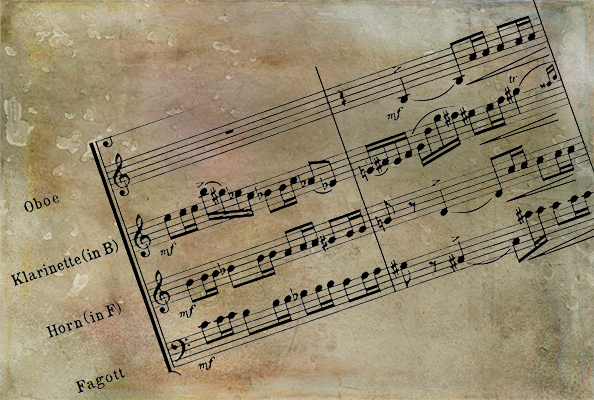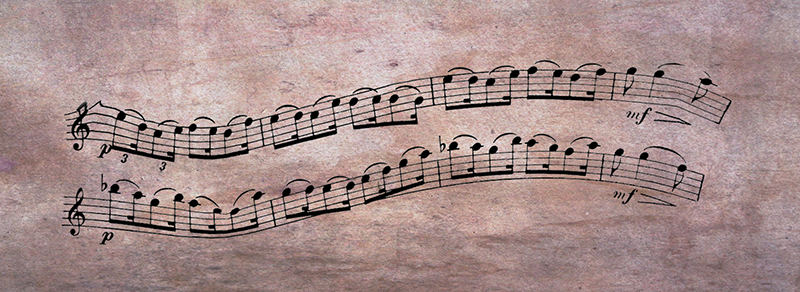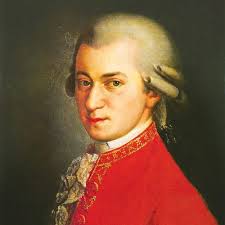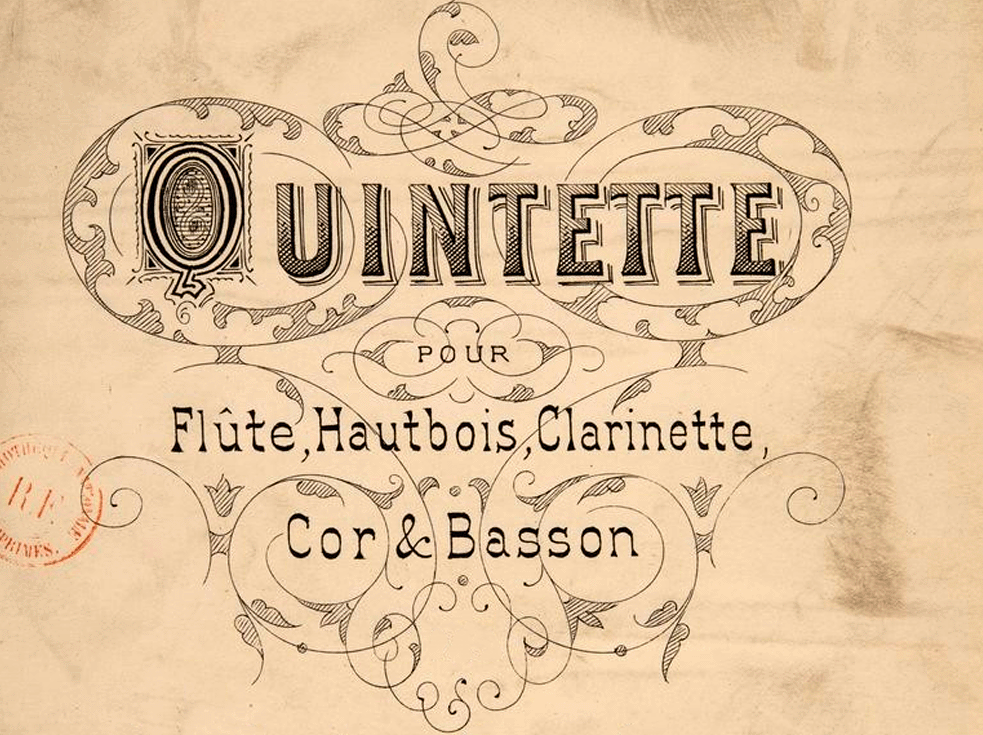How to Use Brandt’s Woodwind Quintet Site
(including the non-quintets)

What is this Site About?
This website is about wind chamber music. Twenty-five years ago, it was a text-only list of woodwind quintets. When it first went online it was mainly about woodwind quintets, but also included a list of works for keyboard and winds. Now, it also has a new list of Trio d’Anches (that is, reed trios, mostly for oboe, clarinet and bassoon). We also have a small but developing list of other Small Ensembles (trios of mixed winds that are not trio d’anches, plus woodwind quartets, again, for mixed winds, and other pieces of interest). We also have a blog, The Cracked Reed Blog, which is in the process of being rebuilt.
Are you selling something?
Nope. There’s nothing for sale on this site and we don’t have ads. We don’t give prices for the pieces we list because we don’t sell them.
How do I use this site?
It’s pretty simple, really. We have 25 pages of lists of woodwind quintets: A-Z according to composers’ last names. (There is no X on this list.) Why so many pages? There are a (startling) 5000 composers and arrangers listed on this site with approximately 11,700 titles of woodwind quintets and quintet-friendly compositions. Composer’s names are listed alphabetical, according to the English alphabet. I’ve also tried to add lots of cross references to help locate composers more easily.
The smaller lists for keyboard and winds, Trio d’Anches and Small Ensemble pages each have their own alphabetical tabs at the top of the page.s

Under each composer’s name, we have titles of compositions. If it not a woodwind quintet or is a non-standard woodwind quintet, I include the instrumentation. If I do not list the instrumentation, it is a standard woodwind quintet (flute, oboe, clarinet, bassoon and horn). If I’m unsure of the exact instrumentation, I’ll tell you.
The amount of information on each composer and each composition depends on what is available. These are the basic pieces of information we potentially have for each composition on this list:
- Birth and death years of the composer, when known.
- Name of the arranger for each arrangement for quintet (or other ensemble). Most arrangements are listed under the name of the original composer. A few arrangers have earned their own listing under their name, too.
- Publisher (sometimes more than one; being published doesn’t always mean it’s currently for sale). I am experimenting with a tiny “Pub.” symbol before each publisher to make it clearer.
- Notes about the composition: number and title of the movements (if known); approximate length of the composition (if known), and other interesting info about the work. Currently I’m testing using left and right dotted borders to help define the Notes areas.
- Commentary about the composition. This might be a mini-review; a discussion of the piece or the composer; or a composer’s own description of this work. It could be a mini-blog post. It varies. Commentaries have a colored background to distinguish them from everything else.
- If a woodwind quintet composer ALSO wrote a work for keyboard and winds, I have a link to that entry in the Keyboard and Winds list. Those entries will have a link back to the woodwind quintet(s). I have not been able to cross-reference works on the other pages. You will have to check for yourself.
Is this site copyrighted?
The site, as a whole, is copyrighted and I also claim copyright for the HTML & CSS portions of the site, as well. I cannot claim copyright on composer names, titles, and their creative work, and I don’t try to. If I quote a composer, I give full credit as I can. But I do claim copyright on any text that has my name attached to it (usually marked with “[ Andrew Brandt ]” and, of course, the blog posts. Please ask for permission if you want to use any portion of this list for any research or thesis, or your own website. Over the years I’ve found a lot of information about woodwind quintets and wind music that few other people have had access to in the past. Please use responsibly and give credit if you do use.

Finding the Composer’s Name
When alphabetizing and searching composer’s names, things are not as easy as one might think.
When translating names from non-Latin languages (for example, Russian), strange things happen. Although “Pyotr Ilyich Tchaikovsky” might be the primary way of spelling his name in English, there are variations (the Library of Congress used to spell it Chaikovsky). In German, his name is spelled Tchaikowsky, although it is pronounced the same. Other Tchaikovsky Variations include: Tchaikovski, Chaykovsky, Chaikovskiy, Chaykovskiy, Chaikovskii or even Czajkowski, Čajkovskij, and Čajkovski. (Yes they are all real spellings.) Don’t believe me? Check out the Tchaikovsky Research site. But, don’t worry, I’ve already done the transliteration for you.
In Russian and in some other languages, the last names might change if they are female or male. People with the last name “Tchaikovsky” and “Tchaikovskaya” might be brother and sister. Likewise, in Iceland, youngsters named “Sigurjonsson” and “Sigurjonsdottir” could have breakfast together regularly.
Asian languages, likewise, can have various spellings. Also, some Asian composers will use Western name order, [First name][Last name], and others use the Asian [Surname or Family name][Personal-individual] name. This can be confusing. A couple of eastern European countries also reverse the name order.
A composer formerly published in the Soviet Union may now go by a different Baltic, Asiatic or other name appropriate for their now independent country. Some composers in northern Spain go by their Basque name, whereas in Madrid they are listed by their formal Spanish name.
Plus, in the performing and literary arts, many composers, performers and authors use professional names, stage names, aliases and even trademarks. And one woman could have a maiden name, a married name, and a professional name. The one she uses may depend entirely on the context.
What About Hispanic names?
In many Hispanic countries, the inheritance of last names is a whole different ballgame. It is a custom in many Spanish-speaking countries to give a child two last names based on both the father’s and the mother’s patronymic last names, such as: [Father’s patronymic (or ancestral) name] [optional hyphen] [Mother’s patronymic last name]. (In other words, normally a child inherits the family names of both grandfathers.) I have no idea how they handle divorces or adoptions or stepparents. In Spanish, therefore, they may have two last names and are properly addressed by both names.
Also, in Spanish, there are no optional middle names. So Ignacio Alonso Perez-Garcia would be addressed as Sr. Perez-Garcia, or more familiarly as Ignacio Alonso. (And close friends might call him Nacho.)
Also, in Spanish, when a woman marries she doesn’t usually change her name. So the father, mother and children in the family might all have different last name pairs. The hyphen is optional in some families. But, when the composer moves to an English-speaking country, they might use only one last name (often the mother’s patronymic), while using one or two back home. Others might insist on using both names, or just the last, everywhere. These naming conventions might be great for genealogists, but curious or confounding to everybody else. I’ve tried to be as correct as possible, but there still may be some mistakes in the list. (I’ve also tried to cross-reference them between pages.)
Can it get any more complicated than that?

If all of the above seems odd, remember that in the Renaissance, Baroque, Classical and even early Romantic periods, it was common in Europe to add Saint’s Day names of the child to and/or the godparent’s names to the already given name to the child when they were baptized. These names might be Latinized also. That’s how they got Johannes Chrysostomus Wolfgangus Theophilus Mozart. And Wolfgang Mozart’s father also noted his son’s name as “Joannes Chrisostomus, Wolfgang, Gottlieb Mozart.” Gottlieb (German) in Latin was Amadeus, and Amadé; in French (“Loved by God”). For this list, we use Wolfgang Amadé Mozart, which matches the composer’s signature, most of the time. Wikipedia has an entire article just about Mozart’s names.
So, I generally use the most common English version and try to list variants as I find them.
All this is to say that sometimes you may need to try more than once to find a composer, by using different names in different orders. Where there could be confusion, I’ve tried to cross-reference names.
Doing Research on Women Composers? We can help.
To help researchers and performers looking for woodwind quintets (and other works) by female composers, I note their names in a different color background than the male names. So far, we list 453 women composers who have written woodwind quintets. This number continues to increase.
Doing the research for this was eye-opening because many names are not obvious. There are some women composers here with names like Geghuni Chitchyan, Hedwige Chretién, Se-Lien Chuang, Koharik Gazarossian, Xinyan Li and Nadav Ziv. How many of you knew they were all women? Likewise there are Fridolin Dallinger, Bechara El-Khoury, Frigyes Hidas, Sylvie Lacroix, Ilja Zeljenka and Andrea Ferrante who I discovered were all men.
If you wish to follow up with more research on women composers, you might check both the The Philomel Project: Women Composers Database and the Boulanger Initiative, two online databases for info on women composers.
This is a big site. Do you have any search tips or tricks? Do you have a search function?
Unfortunately, I have not been able to create a search function for the entire site. Nor is there a reliable way to search titles, publishers and other tidbits.
Fortunately, Google has been very good about adding our site if you search one our composers, but you might need to scroll down or through a couple of results pages to find it. (But the little bits of quoted text around the composer’s name may come from a different piece of music, though.)
Surprisingly, using the “site” command when doing a Google search can give you odd and non-useful results. Googling “Anton Reicha site:woodwind5.com” gives you several mentions of Anton Reicha, but not the main listing, under the Rs, for Reicha. In one case, Google even listed a contact form from the collection of WordPress template forms (with a New York address) that is not in the public part of the site and should not be included by Google in its search results.
Most of the quintet pages on this site have a few composer links near the top of the page to help navigate the page. Even if you aren’t looking for that composer, it might get you closer to that part of the page. The other, non-quintet lists have an alphabetical search function at the top of the page.
But you can use your browser’s search function to help you search.
These tips work if you are using a full-sized browser, and may or may not work on a tablet or phone, especially without a keyboard.
1. Type (or tap) Control-F (Command-F on a Mac) to bring up a search box to start a search. The search will only be for the current page. So if you search for “Reicha” and you don’t find anything, check to make sure you are on the R page.
2. Composer names are listed last-name first. As noted above, names can be complicated. For many names, though, if you want to go straight to that composer (avoiding other mentions of the name) add a comma after the last name as part of the search phrase.
3. Web browser searches normally do not make a distinction between upper and lower case. BRAHMS, Brahms, and brahms and even bRaHmS should all get you to the same place. Also, web browser searches usually ignore diacritical marks, such as umlauts, accents (acute and grave), caronas, tildes, cedillas, and circumflexes (among other marks). Although I’ve tried to include all these marks, as appropriate, you shouldn’t need to include them in the search criteria. (And thank your lucky stars you don’t have to enter them using HTML codes!)
4. Of course, your browser’s search box can also help you find a title, a birth date, a death date, a publisher’s name and so forth, if you know it. If you want to search for a work composed in a specific year, put the year between parentheses: [i.e. “(1929)” – don’t enter the quotation marks]. This, of course, will only work when we know and agree on the year of composition.
5. If you want to scroll up and down the page without the mouse or using a touch-screen, your keyboard has ways of doing that, too. They might change depending on which browser you use, though. It also depends on the type of keyboard. I use a standard, wide, 105-key keyboard, on which you can use the number pad to navigate around a web-site, as well as Home, End, Page up, Page down and arrow keys. (I’m not suggesting you go out and buy a new keyboard just to navigate these pages, but if you already have one, you may want to investigate how to navigate pages on and off the web.)
6. When all else fails, browse.

AI?
I don’t know of any artificial intelligence programs that have dug down the rabbit hole to looking for small sites that list woodwind quintets, but it should happen some time. That might make search easier.
Finally, I am glad you are here. It has taken much longer to get this site back up and running than I ever thought it would. I am still getting the comments and email sections up and running, but hopefully you’ll be able to contact me with your questions real soon.
Copyright © 2024 by Andrew Brandt



This comment applies to the Quartet list:
Bal y Gay, Jesús Divertimento is for the standard Woodwind Quartet (flute, oboe, clarinet, bassoon). Autograph score and parts at Biblioteca, Residencia de Estudiantes, Madrid (scans can be ordered, were free of charge)